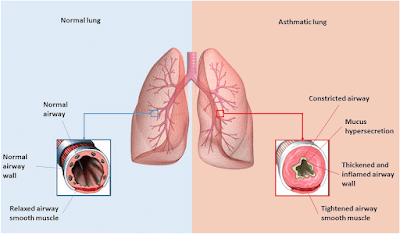Abysmal testing for lung conditions in the UK
Given 20% of the UK population will suffer a long condition in their lifetime (according to Asthma and Lung UK), it is a huge shame that there is a lack of simple tests at GP surgeries for lung conditions.
The silent struggle
According to
the Asthma and Lung UK charity, one in five people is affected by a lung
condition at some point in their lives. These conditions encompass asthma, as
well as various forms of chronic obstructive pulmonary disease (COPD),
including emphysema and chronic bronchitis. Lung disease, the third-largest killer in the UK, silently claims lives, trailing
behind only cancer and heart diseases.
Diagnostic Dilemma
The challenge
lies in the lack of accessible diagnostic tools. Tests such as peak-flow
measurements, spirometry tests to gauge lung airflow, and fractional exhaled
nitric oxide (FeNO) tests measuring nitric oxide levels—indicative of lung
inflammation—can provide valuable insights into lung function. However, many GP
surgeries find themselves unable to afford these tests, forcing GPs to rely on
educated guesses when diagnosing lung conditions.
A patient’s perspective
However,
social media provided a lifeline. Following the advice of fellow asthma
patients, Lucie sought testing. The results revealed eosinophilic asthma,
requiring an injectable immunosuppressant drug—a game-changer that gave her
life back.
Hidden costs and missed diagnosis
It is
suggested that up to 750,000 people in England may be misdiagnosed with asthma,
costing the government an estimated £132 million annually. Moreover, an
additional £2.2 billion is spent on avoidable hospital stays and treatments for
patients with undiagnosed asthma, who either suffer life-threatening attacks or
develop incurable lung diseases.
Lung conditions
already strain the NHS, costing a staggering £11 billion each year, with COPD ranking as the second most common
cause of emergency hospital admissions. These conditions exacerbate winter
pressures, as patients become more susceptible to respiratory viruses and cold
temperatures.




Comments
Post a Comment